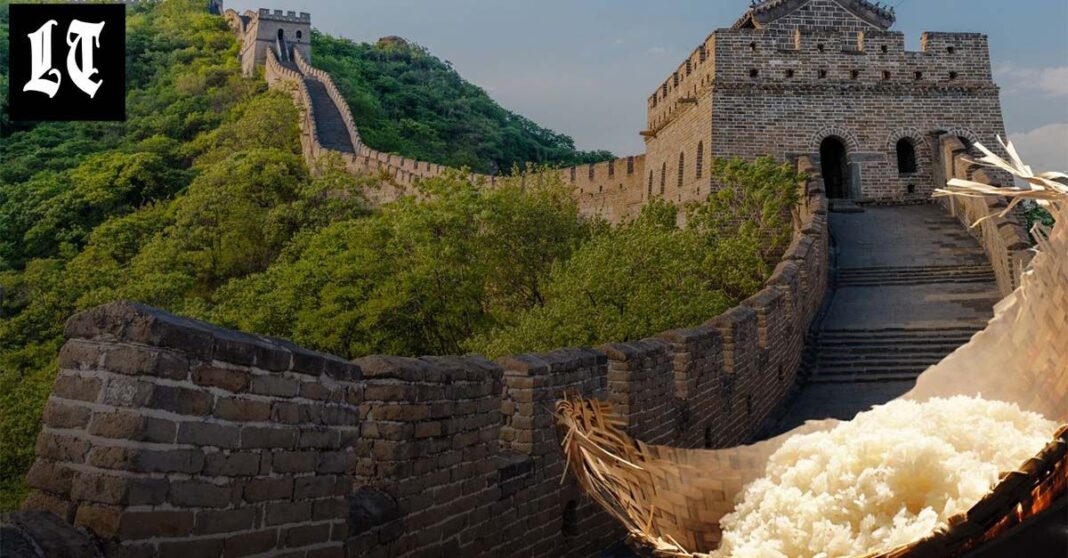Scientists believe many ancient Chinese buildings have withstood the test of time thanks to a secret ingredient in the mortar mix – sticky rice.
A 2010 study by Dr. Bingjian Zhang and colleagues notes that construction workers in ancient China developed mortar ― a paste used to bind and fill gaps between bricks, stone blocks, and other construction materials ― by mixing sticky rice soup with the standard mortar ingredients, about 1,500 years ago.
The sticky rice was added to slaked lime (limestone that has been calcined, or heated to a high temperature) and then exposed to water, according to the research.
Dr. Bingjian’s team identified amylopectin, a complex carbohydrate found in rice and other starchy foods, as the “secret ingredient” that appears to be responsible for the mortar’s legendary strength.
NBC News reports that Dr. Bingjian and his team found that mortar made with sticky rice had smaller calcium carbonate crystals than mortar without it, creating a more compact structure and causing the crystals to stick together.
Builders used the material to construct important buildings like tombs, pagodas, and city walls, some of which still exist today.
“Some of the structures were strong enough to shrug off the effects of modern bulldozers and powerful earthquakes,” said Dr. Bingjian.
The scientists constructed lime mortars with varied concentrations of sticky rice and assessed their functionality, in comparison to the conventional lime mortar to see if the mortar may aid in the restoration or construction repairs.
“The test results of the modeling mortars show that sticky rice-lime mortar has more stable physical properties, has greater mechanical strength, and is more compatible, which makes it a suitable restoration mortar for ancient masonry,” the article from the American Chemical Society notes.
The Great Wall of China was last rebuilt during the Ming Dynasty (1368–1644), when this type of sticky rice mortar was in use, indicating that sticky rice may have been a component utilized in the reconstruction of some portions of the Great Wall of China.
Sticky Rice, a staple of Asian culture, is also a significant factor in the Lao Economy, with Laos exporting in excess of 30,000 tonnes to China, Europe, Thailand, and Vietnam every year.



